What’s Happening Here?
Instead of playing our regular diagnostic challenge where I ask you to determine what's going on in the image here and then reveal the answer at the end of the newsletter, let’s change things up a bit. In this week’s challenge, I’m still showing you an image of a problem, but instead of the usual, I’m asking if you would please provide some feedback to me (ppilon@ballpublishing.com) as to what you think is going on. First, check out the symptoms on this delphinium.
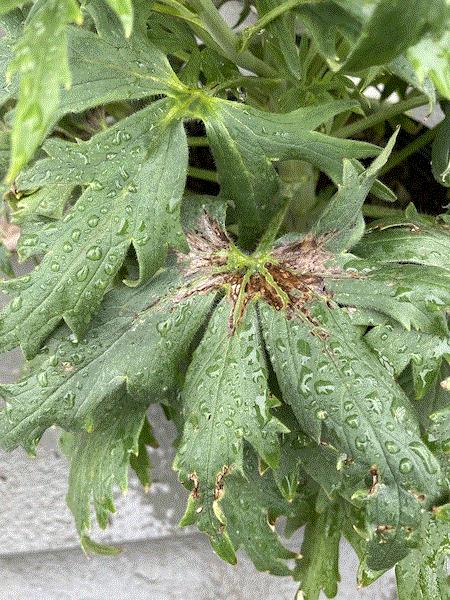
This symptom was observed on several delphinium plants a grower was producing. I was wondering if collectively we could solve this dilemma and allow this grower to prevent it from occurring in the future. What do you think? Are you able to help us out?
Let’s see, what else I can tell you? There were several leaves expressing these symptoms, all about the same place on the plant. This suggests some type of event. Perhaps heat, cold or possibly something else? Please help out this grower and share your ideas. I’ll compile them, let you know what responses I received in the next newsletter and hopefully we can identify this problem for the grower.
Please send your thoughts and ideas to me at ppilon@ballpublishing.com. Thank you in advance for your responses.

The RedBooks are here! The RedBooks are here!
Perhaps me yelling, "The RedBooks are here! The RedBooks are here!" doesn’t have the same meaning as Paul Revere’s famous midnight ride during the American Revolution where he yelled, "The Redcoats are coming! The Redcoats are coming!" to warn people the British soldiers were coming. But it’s still exciting to share this announcement with you.
The Ball Redbook has become a staple to growers for decades and Ball Publishing has just released the 19th edition. The RedBook is the horticulture industry’s oldest continuously published reference book. The founder of Ball Horticultural Company, George J. Ball, published the first RedBook in 1932 and it has been updated numerous times over the past 89 years.
|
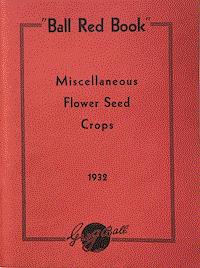
Then
|

And now
|
With each edition growing in size and scope over the years, The RedBook is now a two-volume set with nearly 1,000 pages of excellent content. The Ball RedBook has long been considered the "bible" for the greenhouse industry and is loaded with detailed production information for annuals, perennials, cut flowers and other horticultural crops. The 19th edition contains sections on robotics, artificial intelligence, controlled environment agriculture and cannabis production.
Both volumes of the 19th edition of the Ball RedBook are available as hardcover books or as ePubs for eReaders. Click HERE to order the newly updated Ball RedBook.


Plant Development’s Newest Additions
Plant Development Services Inc. offers three top ranking brands (Encore Azalea, Southern Living Plant Collection and Sunset Plant Collection) and owns and/or licenses over 100 patented plants. Recently, they announced four new additions to the Southern Living and Sunset Plant Collections. Drumroll please, the new additions are:
Buddleia Butterfly Towers
|
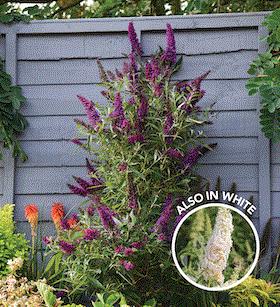
Butterfly Towers Magenta
|

Butterfly Towers White
|
There are two unique buddleia cultivars being added: Butterfly Towers Magenta and Butterfly Towers White. These eye-catching cultivars grow vertically and can be described as towers of blooms. With their upright four to five ft. high by two to three ft. across growth habits, the Butterfly Towers cultivars are ideal for hedges or screens. They produce copious amounts of blooms all summer long. These new butterfly bush cultivars are both hardy to Zone 5.
Hydrangea Princess Bride

This Zone 7 hydrangea may not be for everyone, but is a great option for those of you in warmer locations. The flower petals are remarkable with intricate shapes in crisp white hues resembling a delicate lace. Princess Bride forms blooms up and down each stem, resulting in white lacecap flowers from spring to fall.
Leucanthemum Real Goldcup
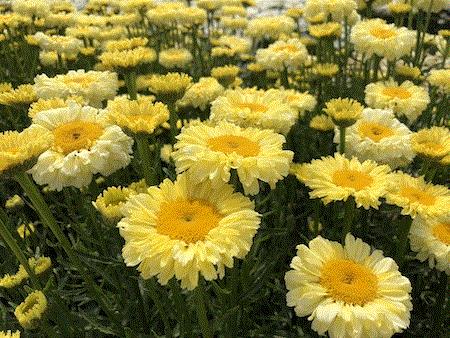
Real Goldcup has large, fancy 4.5 to 5-in. diameter sunshine yellow flowers. It has three layers of flower petals that are colorfast with no color phasing or fading of the flowers over time. This stunning shasta daisy has nice size reaching 36 in. tall by 18 in. across and holds is blooms on strong, sturdy stems. Leucanthemum Real Goldcup has excellent garden performance and doesn’t require staking. Hardy to Zone 5.
Rose It’s a Breeze Ivory Blush
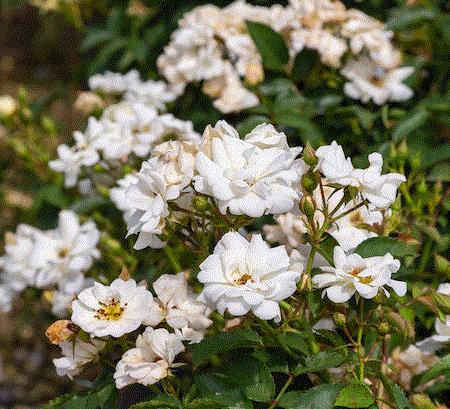
It’s a Breeze Ivory Blush is a pretty incredible groundcover rose cultivar. It’s not only heat tolerant, but also extremely disease resistant. Ivory Blush blooms profusely in the spring and reblooms again in the fall. The flowers appear pure white in warm temperatures and pale pink under cooler conditions. It grows up to three ft. high by up to four ft. across. This Zone 4 rose is ideal for accents, containers, hedges or mass plantings.

GardenComm is Calling ALL Garden Communicators
I wanted to pass along an announcement for the upcoming GardenComm Virtual Conference. I know in the back of your mind you’re thinking GardenComm is just for garden writers. Now it’s time to bust that myth. GardenComm is for ANY type of garden communicator. If you talk about plants in any medium, whether speaking, writing, posting on social media, tweeting or sharing photos, you’re a garden communicator and the upcoming virtual conference may be beneficial to you.

During the four-day event, you can up your game and sharpen your communication skills. Here are some examples of the great content offered at the GardenComm Virtual Conference:
-
Plant and Shoot - Smartphone Photography for Plant People with Grace Hensley
-
Press Releases for Garden Communicators with Kathy Jentz
-
How to Create an Effective and Engaging E-mail Marketing Strategy with Rebekah Miel
-
Your Reach on Instagram: Reels, Stories, Guides and IGTV with Callie Works-Leary
-
Working the Plant Geek Way: An Insight into a Hortpreneur with Michael Perry
-
Mind the Gap: Talking About Gardens in a Post-COVID World with Becky Paxton, Katie DuBow and Corrina Murray
This is just a sampling of the great sessions. Attendees will also have numerous networking opportunities, chances to meet gardening book authors and even take virtual private tours of gardens from around the world.
To learn more about the conference, sponsorship and to register, visit http://bit.ly/GardenCommVirtual2021.

Resistance Management
I’m always looking for content I know you can’t resist and that led me to the new research and extension publication from K-State University aptly titled, "Resistance Management of Arthropod Pests in Greenhouse Production Systems."
I sometimes feel a little preachy or like I’m telling you something you already know when I bring up this topic with growers or during presentations. Having said that, you’d be surprised how often I’m asked about insect or mite resistance. Rather than regurgitating the info in the K-State bulletin, I kindly ask you to download and read the extension publication for yourself.

It provides a brief overview of insecticides and miticides, discusses numerous details on pesticide resistance and finishes up with pesticide rotations and mixtures. It even provides some rotations to avoid resistance with several pests including aphids, mealybugs, two spotted spider mites and whiteflies.
Follow this link to see this great extension paper on resistance management:
http://bookstore.ksre.ksu.edu/pubs/MF3564.pdf.





Thanks for reading this edition of Perennial Pulse. My email is ppilon@ballpublishing.com if you have any comments or suggestions.
Take care,
Paul Pilon
Editor-at-Large—Perennial Pulse
Technical Manager—OHP, Inc.
This email was received by you and 34,264 other fine subscribers!
If you're interested in advertising in Perennial Pulse, contact Kim Brown ASAP and she'll hook you up.